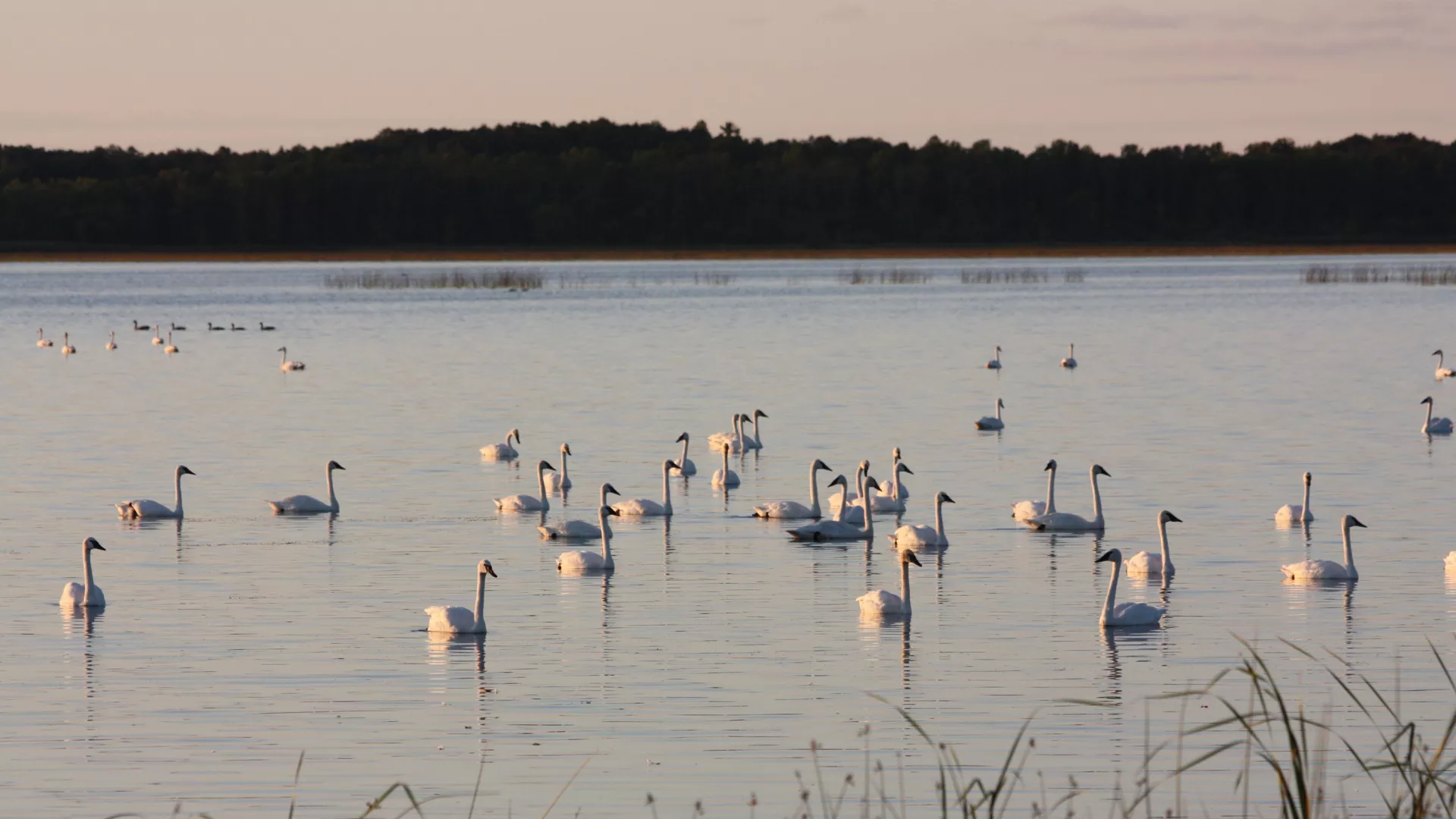
Experience the Fall Migration on the Pine to Prairie Birding Trail
Bird-watching—shortened to “birding” by those in the know—is yet another reason to get outside in Minnesota, particularly in the fall. Many birders head to northwest Minnesota, home to more than 275 species of birds thanks to the region’s diverse terrain, from tallgrass prairies to pine forests to sand dunes.
Winding through it all is the aptly named Pine to Prairie Birding Trail, which stretches more than 200 miles between Fergus Falls in the south to Warroad in the north, with 51 viewing sites along the way. It even extends across the border into Manitoba with an additional 24 sites.
Thousands of Birds, Dozens of Species
Beautiful trumpeter swans, majestic bald eagles, the iconic common loon and 10 species of owl are among the area’s winged residents. During the fall migration, visitors are likely to spot various species of warblers, swans, ducks, eagles and herons. In September and October, sandhill cranes on their southward journey from Canada may be found at Lake Bronson State Park and the Roseau River and Twin Lakes Wildlife Management Areas.
For novice birders, the National Wildlife Refuges along the trail are good places to start, says Betsy Beneke, one of the trail’s founders. Prairie Wetlands Learning Center in Fergus Falls, Tamarac National Wildlife Refuge north of Detroit Lakes and Agassiz National Wildlife Refuge near Thief River Falls all have staff on hand to point visitors in the right direction.
The Tamarac Refuge is home to 30 nesting pairs of trumpeter swans, which have nearly 100 babies every year. Visitors in the fall can see the swans as well as thousands of ring-necked and other ducks from the observation platforms, says Kelly Blackledge, visitor services manager.
Birders interested in spotting some more unique species should head to the north end of the trail, says Beneke, where the great gray owl, three-toed and black-backed woodpeckers, and more than 20 species of warblers reside in the boreal forest. At the south end between Detroit Lakes and Fergus Falls, prairie chickens, short-eared owls and prairie sparrows are among the inhabitants.

Expert Birding Tips
Dawn and dusk are the best times to spot the most birds, since this is when they are active and looking for food. Birders should come prepared with binoculars, cameras, insect repellant, good walking shoes and a field guide, suggests Beneke. Smartphone apps are even available to help identify birds by picture and by song.
“Be flexible, be adventurous, get off the beaten track, be observant and enjoy the landscape,” adds Blane Kemek, Detroit Lakes Area Wildlife Supervisor for the Department of Natural Resources.
For trail maps, a bird checklist and more information, visit mnbirdtrail.com, which also posts a weekly report of bird sightings.

